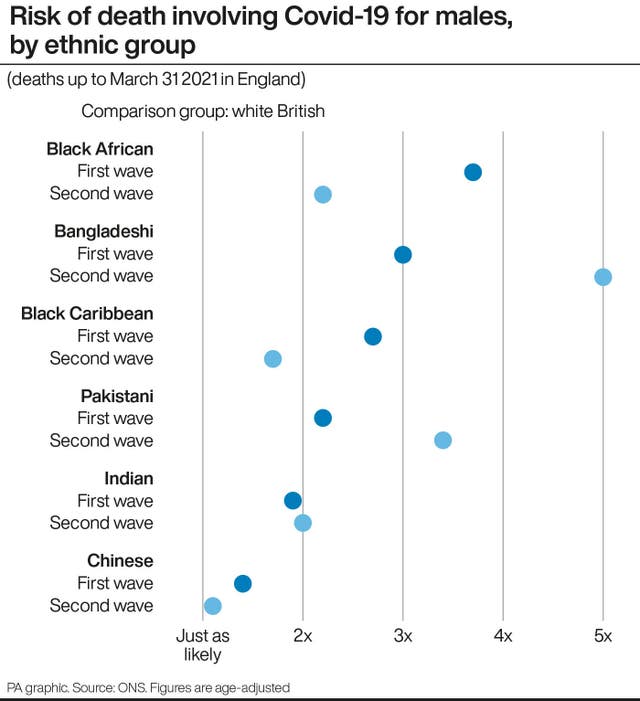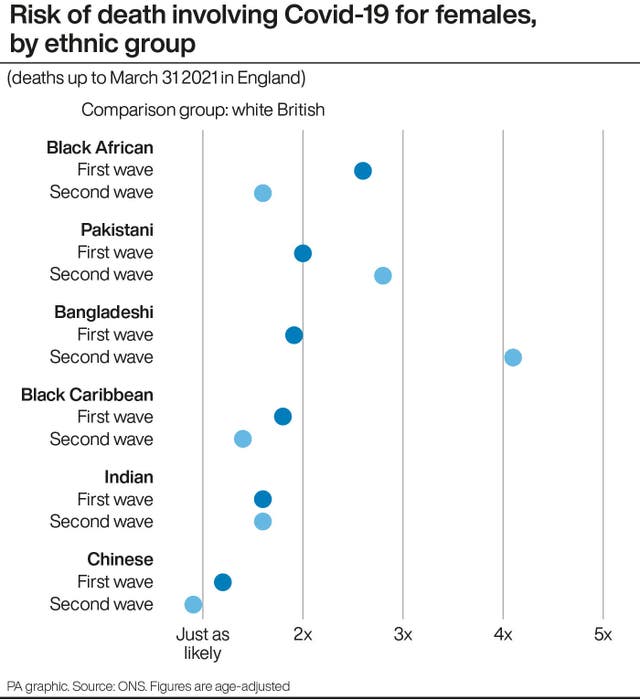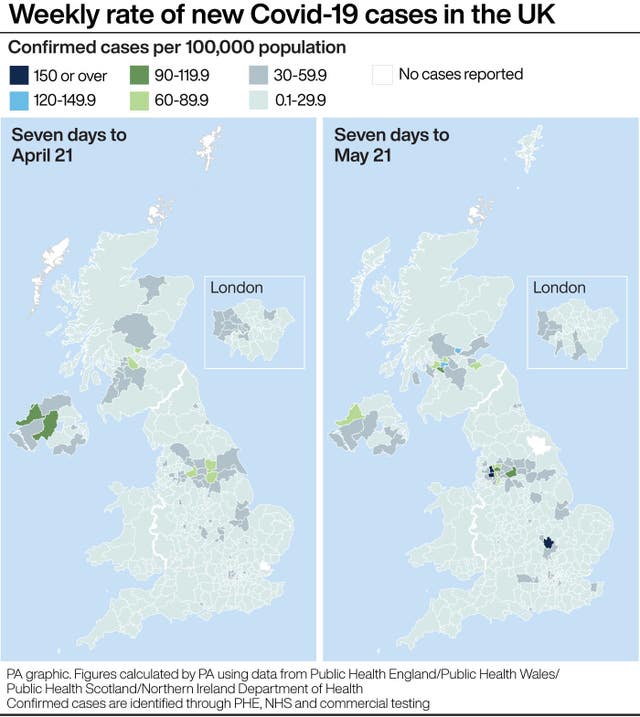Risk of Covid-19 death for ethnic groups ‘different in second wave’
Factors such as occupation and pre-existing health conditions explain a large proportion, but not all, of the excess risk.

People of Bangladeshi and Pakistani ethnic backgrounds in England have had higher mortality rates during the second wave of Covid-19 than the first, while other ethnic groups have seen a drop in the relative risk compared with white Britons, figures suggest.
Most minority groups have remained at higher risk of death involving Covid-19 throughout the pandemic compared with people identifying as white British, according to fresh analysis from the Office for National Statistics (ONS).
But the patterns of risk by ethnic group have changed between the first and second wave.

During the first wave of the pandemic – up to September 11 – males from all ethnic minority groups in England were at increased risk of death involving Covid-19 compared with males identifying as white British, the ONS said.
Females from all ethnic minority groups other than Chinese and “white other” were also at greater risk.
In the second wave – from September 12 onwards – although people from black African and Caribbean ethnic groups remained at higher risk than white Britons, the difference was smaller compared with the first wave.
By contrast, the risk of death involving Covid-19 was higher for people from Bangladeshi and Pakistani ethnic groups than during the first wave.
The ONS based its analysis on deaths involving coronavirus that occurred up to March 31 2021 among people aged 30 to 100 that could be linked to the 2011 Census.

The figures, which have been adjusted for age, suggest that:
– Covid-19 mortality rates for black African males were 3.7 times greater than for white British males during the first wave, higher than any other ethnic minority group, but 2.2 times greater in the second wave. For black Caribbean males, the risk fell from 2.7 times to 1.7 times greater.
– For Bangladeshi males, mortality rates rose from being 3.0 times greater than white British males in the first wave to 5.0 in the second wave, and for Pakistani males it increased from 2.2 times to 3.4 times greater.
– Black African females experienced mortality rates 2.6 times higher than white British females in the first wave, but 1.6 times higher in the second wave. Among black Caribbean females the risk fell from 1.8 times to 1.4 times greater.
– For Bangladeshi females, rates rose from being 1.9 times greater than white British females in the first wave to 4.1 in the second wave, and for Pakistani females it rose from 2.0 times to 2.8 times greater.
Adjusting for other factors such as occupation, living arrangements and pre-existing health conditions accounted for a large proportion of the excess Covid-19 mortality risk in some ethnic minority groups.

However most black and south Asian groups remained at higher risk than white British people in the second wave, even after adjustments.
The ONS said its findings “demonstrate that people from most ethnic minority groups have experienced greater rates of death involving Covid-19 compared with people of white British background during the pandemic”.
Patterns of excess mortality risk by ethnic group have changed over the course of the pandemic, with “Bangladeshi and Pakistani groups particularly at risk during the second wave, whereas the risk to the black African and black Caribbean groups relative to the white British population was lower during the second wave than the first”.
Factors such as location, employment and health conditions explain a large proportion of the excess Covid-19 mortality risk observed in some ethnic groups.
But they do not explain all the risk, with “further work” needed to “increase our knowledge and understanding of the possible mechanisms underlying this unexplained risk”, the ONS added.





